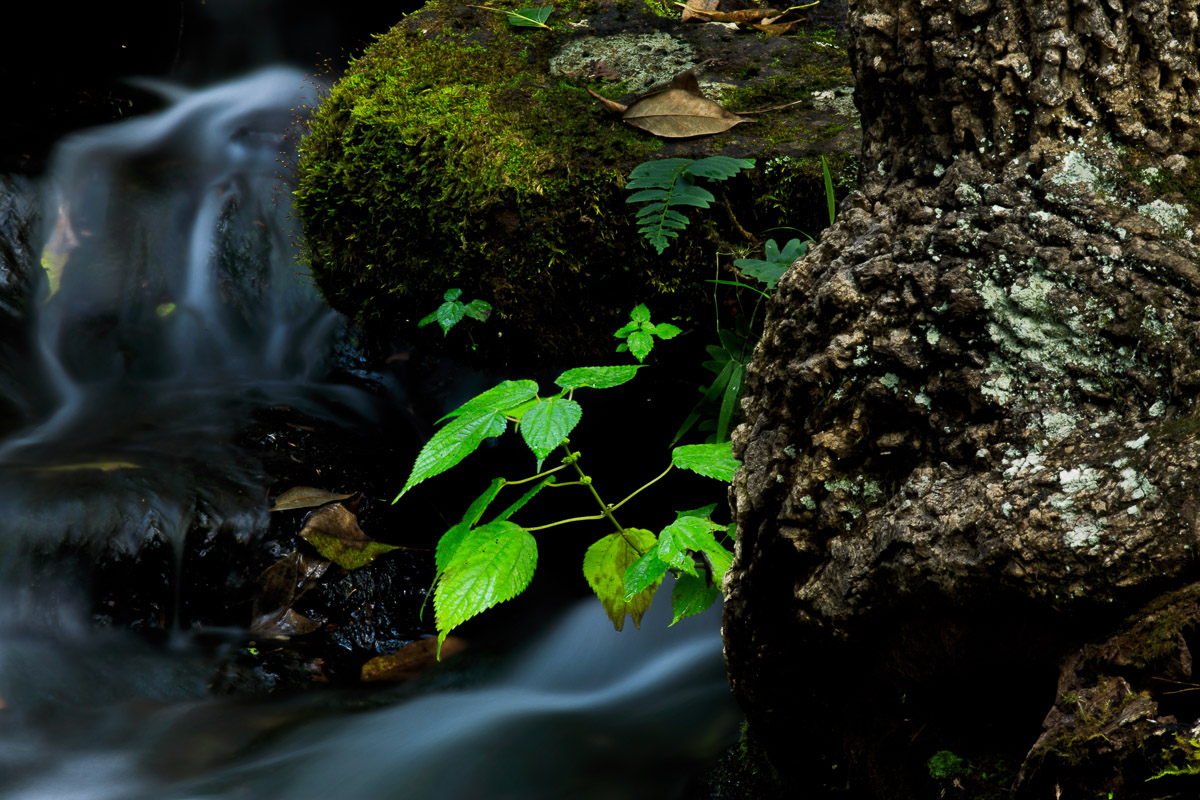I was thoroughly enjoying the peaceful and tranquil morning at Collins Creek. After photographing the twin horsetail waterfalls, I took a little time to just stand quietly observing what was around me before I moved to a different location.
As I was about to move to another shooting spot, I noticed this one small vine that was peeking out from between the rock behind it and the tree in front. It just seemed to be begging to me “Hey, look at me! I’m right here! Please, take my picture!”
I wanted the attention to be on the small vine, but I also wanted to include just a small part of the surrounding scene. I switched to my 100-400mm telephoto lens and zoomed to the 400mm focal length. This gave me the exact framing I wanted to achieve.
The scene I was shooting was no more than 30 to 35 feet away from where I was standing, so depth of field was a concern. I wanted the entire frame to be sharp, so with my camera set on aperture priority, I selected an aperture of f/40, the smallest available at that focal length.
The vine was in shade. A 25 second shutter speed at a 200 ISO was required to ensure everything was properly exposed. But, a shutter speed this long was concerning because any movement of the vine would cause it to blur, and the image would be ruined. I could have used a higher ISO, but I didn’t want to introduce any more digital noise than was absolutely necessary.
I wasn’t feeling any air movement, and, watching through the viewfinder, I didn’t see any movement in the leaves. I pressed the shutter button and hoped for the best.
When I got home and looked at the picture in Lightroom, I was pleasantly surprised to find everything had worked out.
Processing the image, I had a very clear idea in my mind of how I wanted the final picture to look. I wanted to create an image in which the viewer feels like he is standing in a deep forest with this one vine being brightly lit as if a small shaft of sunlight is filtering through the forest canopy and shining upon it.
I reduced the overall exposure by nearly a full stop, darkened the shadow areas even further, and added a moderate amount of contrast. Then, using Lightroom’s adjustment brush, I further reduced the exposure of the foreground tree trunk, the background rock, and the small fern leaf and other grasses. Finally, I opened the file in Photoshop and sharpened the image using Topaz Sharpen AI.
The final result was exactly as I had pictured in my mind.
